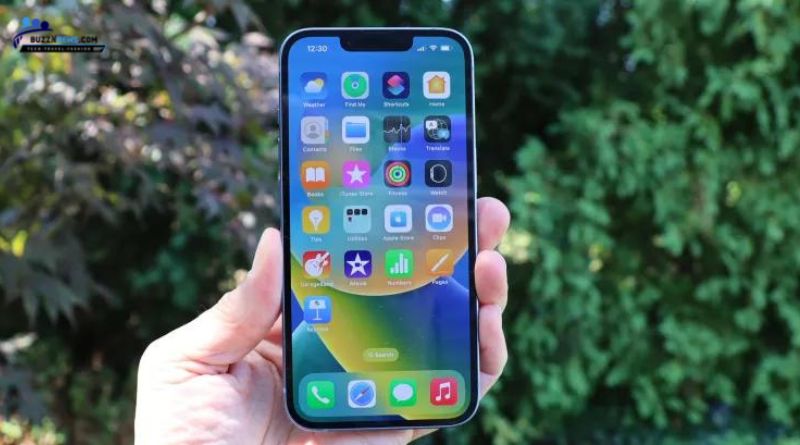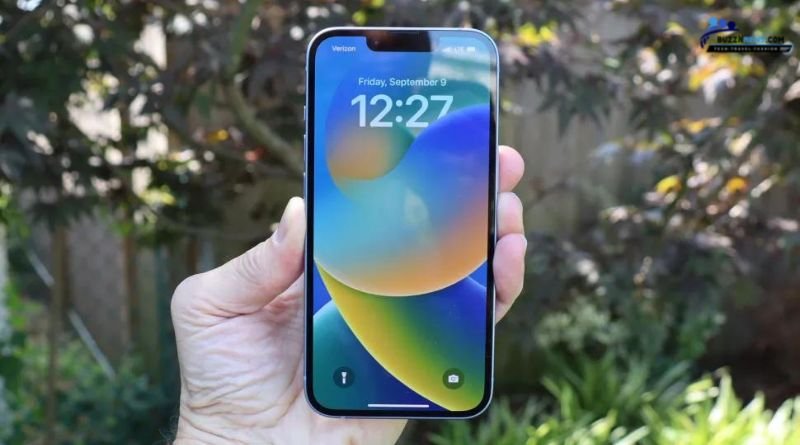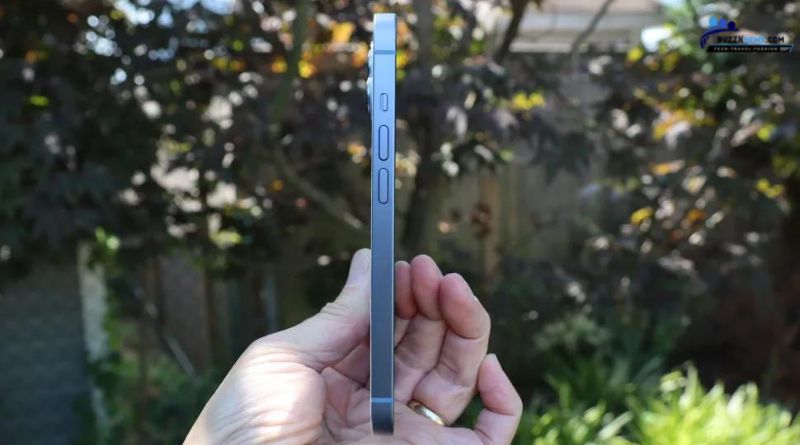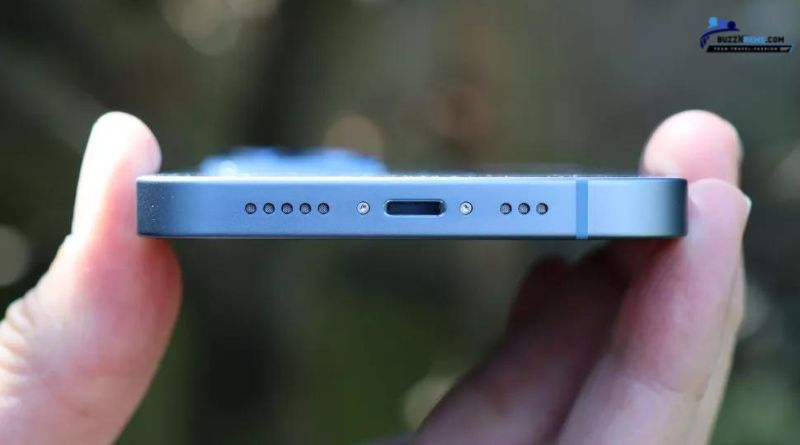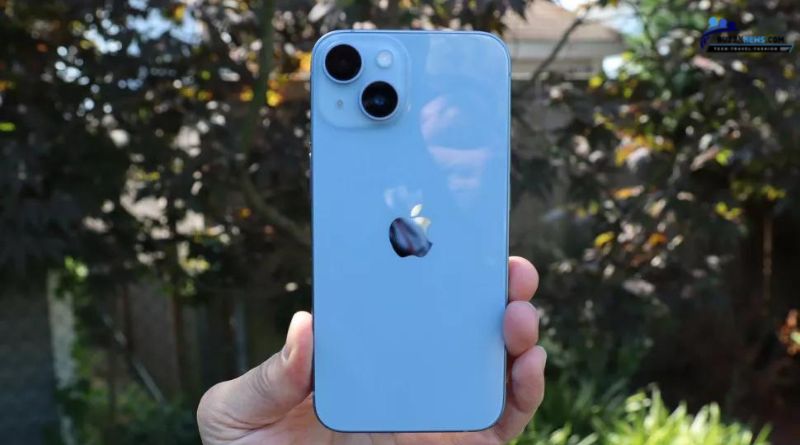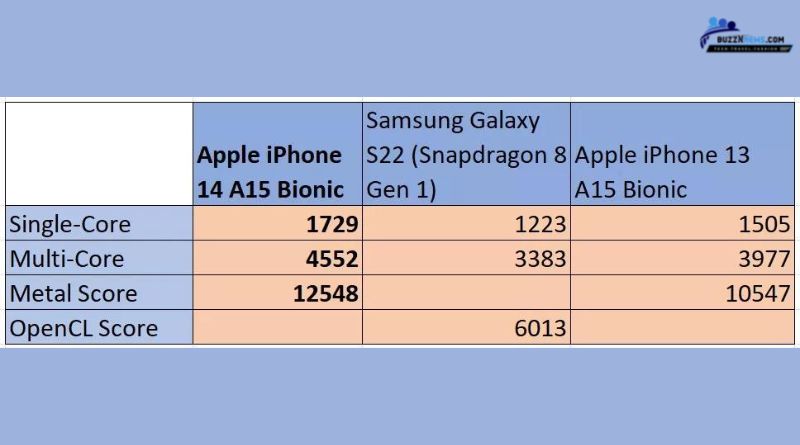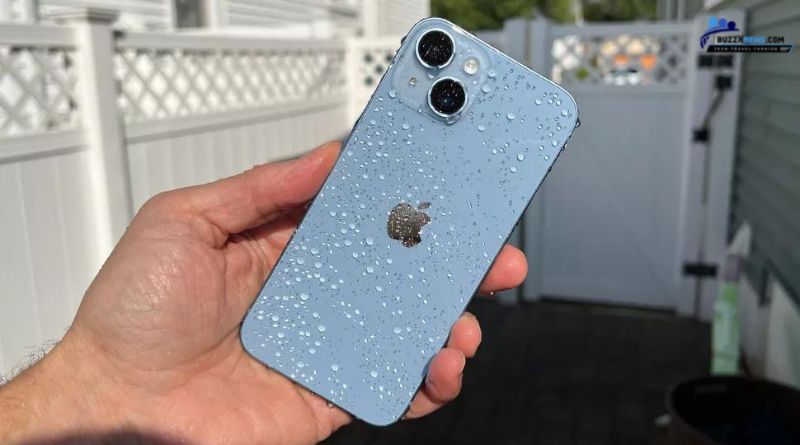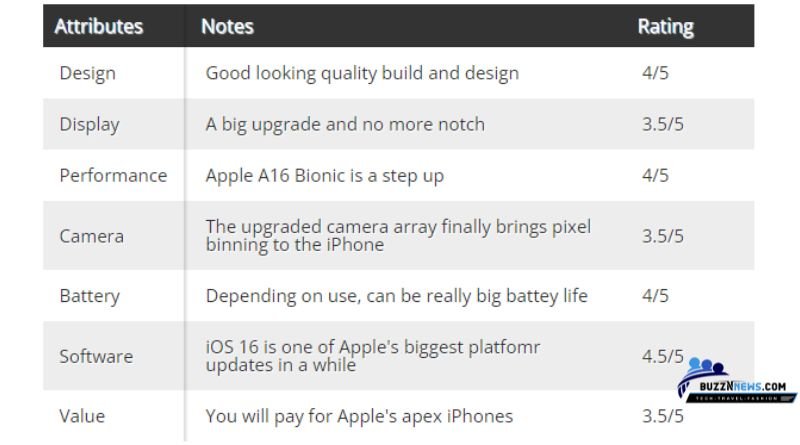iPhone 14 review
Pros
- +Familiar design and quality build
- +New heat dissipation interior
- +Better TrueDepth camera
- +Emergency satellite communications
Cons
- -The notch remains
- -Last generation A15 Bionic chip
- -Mostly minor upgrade
Two-minute review
It’s a little difficult to get thrilled about an iPhone with a screen, CPU, and design from the previous year, but when seen independently and without the significant influence of the new iPhone 14 Pro, Apple’s new iPhone 14 appears to be a pretty darn nice smartphone.
Even while the iPhone 14 shares a lot of similarities with the iPhone 13, it has several internal changes that promise to give a better user experience overall.
The two rear cameras on the phone, a 12MP wide and a 12MP ultra-wide, both feature new sensors, and the 12MP TrueDepth camera can now autofocus and eat up more light. The brand-new Photonic Engine from Apple supports all of the lenses (“photonic” refers to the management of photons, or light particles – read more about it in our iPhone 14 camera explainer). Practically speaking, it involves rearranging Apple’s imaging pipeline so that uncompressed photos are now processed using the Deep Fusion neural engine (rather than compressed ones, as it did previously).
The fantastic Super Retina XDR OLED screen is still available, but if you don’t like the notch, you might want to choose the 14 Pro or Pro Max instead because they have Apple’s cool new Dynamic Island coupled with an adjustable refresh rate and an always-on display.
Additionally, Apple decided to stick with the Apple silicon from the previous year for the iPhone 14 and 14 Plus. Of course, it’s not the exact same A15 Bionic that powered the iPhone 13 and 13 Mini in 2016. This A15 Bionic sports a five-core GPU instead of a four-core GPU. It should deliver better performance than the chip in the iPhone 13 because it is effectively the same chip that was in the iPhone 13 Pro and 13 Pro Max from a year ago.
Even if they are difficult to test, several fascinating new capabilities are available, such as crash detection, which lets your phone notify emergency services and important contacts if you are involved in a car accident. In a similar line, emergency services may now be contacted through satellite communications on the iPhone 14. It’s encouraging to note that even Apple’s entry-level iPhone 14 gained access to this new feature, a first for the industry.
Other notable internal changes include a new heat dissipation mechanism that will improve the phone’s ability to control temperatures and improve its performance (this phone has better battery life than the iPhone 13). The rear glass may now be changed without having to replace the entire casing, according to Apple, making this iPhone easier to repair than earlier versions.
APPLE IPHONE 14 PRICE AND AVAILABILITY
- 128GB: $799 / £849 / AU$1,339
- 256GB: $899 / £959 / AU$1,579
- 512GB: $1,099 / £1,179 / AU$1,899
- On September 7, 2022, Apple introduced the whole lineup of iPhone 14 models, including the iPhone 14, iPhone 14 Plus, iPhone 14 Pro, and iPhone 14 Pro Max.
On September 9, the iPhone 14 went up for presale; as of September 16, it is currently in stock. It starts at $799 / £849 / AU$1,399 for the 128GB model, but you can upgrade to 512GB of storage (if you’re already intrigued, check out our top iPhone 14 discounts).
There are no alternatives for more RAM than the standard 6GB, unlike most Android phones, even though it is more than the base iPhone 13, which had just 4GB.
Score for value: 3.5/5
The 6.1-inch iPhone 14 resembles the iPhone 13 almost exactly except from additional colour options (we tested the nice pastel blue variant). The screen, stereo speaker grilles, Lightning port, and even its aluminium frame all continue to be the same. However, there are minor structural variations.
Its dimensions are 146.7 x 71.5 x 7.8 mm, somewhat thicker than the iPhone 13’s. Additionally, it is two grammes lighter than the previous phone, which we attribute to the improved thermal design of the gadget. The iPhone 14 goes into the official iPhone 13 MagSafe cover perfectly well, although the iPhone 14’s two-lens camera array is significantly bigger despite the similarity in chassis (as are the lenses themselves).
The iPhone 14’s dust and water resistance is the same as the iPhone 13’s, and all of the materials, including the Ceramic Shield protecting the display, are the same. Naturally, we tested the durability of our iPhone 14 by running it through a sprinkler. It was fine and would have appreciated the break from the sweltering New York heat.
Score for design: 4.5
APPLE IPHONE 14 DISPLAY
- Familiar 6.1-inch Super Retina XDR
- The notch persists
- No adaptive refresh or always-on functionality
- Still a high-quality OLED display
The Super Retina XDR display of the iPhone 14 has a resolution of 2532 x 1170 and 460 pixels per inch, which is almost identical from the iPhone 13. In this now rather dated design, the notch that was eliminated from the iPhone 14 Pro and Pro Max still exists. It includes an upgraded TrueDepth camera (which is still 12MP but has a stronger light-gathering sensor and can autofocus), an IR sensor, a flood illuminator, and, most importantly, the top speaker (the other speaker is on the bottom of the phone). As it appears unlikely that it would survive in the projected iPhone 15 of next year, this is perhaps the notch’s final chance.
This display is vibrant (up to 1,200 nits), vivid (Wide Color), and has deep blacks (2,000,000:1 contrast ratio) owing to OLED, yet it already feels dated compared to the most recent Apple display innovations. Neither the 120Hz ProMotion that we initially encountered on 2021’s Pro versions nor the adaptive refresh rate exist. just 60Hz. When the iPhone 14 Pro and Pro Max provide adjustable refresh rates that span from 10Hz to 120Hz, it can be difficult to accept. Additionally, for increased power economy, those phones include a new always-on display mode that may slow down to only 1Hz. Once more, you pay more for this.
Score displayed: 3.5/5
APPLE IPHONE 14 CAMERAS
- Familiar 12MP main + ultrawide on the back
- New sensors across the board
- Photonic Engine further improves image quality
- New Action mode
The iPhone 14 has just two rear cameras:
- A 12MP main (26mm, f/1.5)
- A 12MP ultrawide (120-degree field of view, 13mm, f/2.4)
Comparing these cameras to their forerunners, they have improved sensors and overall low-light performance. Group selfies should be a little bit simpler given that the front camera, which is also 12MP, has autofocus.
A new image pipeline benefits all the cameras. Because it can deal with uncompressed pictures, the Photonic Engine gives Deep Fusion neural image processing more of a priority than it did in the past.
The iPhone 14 takes nice photos, but after using the iPhone 14 Pro as well, we do regret having optical zoom and macro capabilities at our disposal. Nevertheless, most users should be satisfied with this degree of photographing aptitude and the high-quality output.
This model can record videos in up to 4K resolution, much like the rest of the iPhone 14 series, and Cinematic Mode has been upgraded to accommodate 4K at 30 frames per second.
The running person symbol is located in the upper right corner of the camera app’s viewfinder, and tapping it enables the brand-new Active Mode. Action footage may surprise be shake-free by using this technique. No, there isn’t a new gimbal in the iPhone 14; instead, Apple uses over-scan and enhanced roll detection, which is a fancy way of saying it quickly and on-the-fly cuts the video to maintain the centre (often a subject) more smoothly in-frame. Although this technique does remove some video data (resulting in a cropped frame), the outcomes are GoPro-smooth. Although I doubt it would be of great use, if you enjoy action movies, this may be a godsend.
Camera rating: 3/5
APPLE IPHONE 14 AUDIO
On the audio front, Apple has at least exhibited consistency. All four of the iPhone 14 versions produce loud (if desired), crystal-clear, and brilliant sound thanks to stereo speakers and spatial audio capabilities. Spatial audio enhances the surround-sound experience in media such as music and movies that support it. Additionally to Apple Music’s extensive spatial audio playlist, there are movies on Netflix, Amazon, and other streaming services that you may watch to take use of the functionality. The iPhone 14 produced excellent audio for everything we performed.
APPLE IPHONE 14 PERFORMANCE
- Uses the iPhone 13 Pro’s A15 Bionic chip
- New heat dissipation system gives the processor more breathing room
- Good performance for the price
Hey there, mobile CPU from last year! To begin with, we must make it quite apparent that the A15 Bionic is in perfect working order. Mobile games like Asphalt: Legends and PUBG operate smoothly thanks to this potent CPU, which has routinely outperformed the best Qualcomm has to offer. The quicker and more effective A16 Bionic featured in the iPhone 14 Pro and Pro Max can be used to edit 4K films, access the web, and perform all other tasks; the real-world difference probably won’t be noticeable until after years of use.
It was sort of clever of Apple to transfer the upgraded A15 processor from the iPhone 13 Pro to the iPhone 14. It’s a smart way to save costs that will satisfy everyone.
The A15 Bionic boasts a redesigned internal architecture for more effective heat dissipation, and it is housed within the new iPhone 14. This, according to Apple, aids in repairability, but a cooled chip ought to function more effectively.
Despite having a battery that is only slightly larger, this iPhone offers better battery life (20 hours of video streaming, compared to 19 hours for the iPhone 13), suggesting Apple’s efforts with the cooling system are to blame for this improved efficiency. Benchmarks were largely in line with the A15 Bionic we tested in the iPhone 13 Pro.
Score for performance: 4.5
APPLE IPHONE 14 ESIM AND SATELLITE CONNECTIVITY
The whole iPhone 14 range in the US no longer has a SIM card port; instead, it uses eSIM technology to connect you to the cellular network. In our experience, there was no extra setup work required for the iPhone 14—granted, Apple had previously given our phone a phone number for testing. You should be able to electronically transfer your physical SIM information from your old iPhone to a new one without the assistance of your carrier. Once people get access to these new SIM-free iPhones, we’ll know how well everything functions.
Emergency SOS via satellite is another fascinating new communication function. In order to provide this additional degree of emergency help, Apple collaborates with low-Earth orbit satellites from Globalstar. Although we couldn’t test it, we were able to observe it in use at Apple’s campus in Cupertino, California.
We hiked up a hill where there was no phone service and no Wi-Fi. We observed a little ‘SOS’ and satellite icon in the upper-right corner of the display on the iPhone 14 Pro utilised for the demonstration (we assume the system operates similarly on the iPhone 14). Please take note that you must be outside and have a clear view of the sky for these icons to show.
The iPhone 14 will, as it did in our demo, ask you if you want to attempt emergency text via satellite if you call 911 (in the US) in this circumstance. After then, a visual clue for which direction to look to connect to the closest satellite is provided via an on-screen emergency aid. The system then prompts you with a series of questions that may be sent to Apple’s relay centre through compressed text, which subsequently calls emergency personnel.
The system will remind you to turn in the proper direction to reconnect if a satellite moves out of range while the connection is being carried out.
While emergency circumstances are the main purpose for satellite communications, you may also utilise the system to notify others via Find My that you, for instance, successfully scaled Mount Everest or Snowdon.
APPLE IPHONE 14 BATTERY
- Enough juice for a busy day
- Wireless charging + MagSafe
- Buy your own adapter
The iPhone 14 can play video for 20 hours, stream video for 16 hours, and play audio for 80 hours, as I have explained. Our battery lasted longer than a full day on a single charge. There is no charger included with the iPhone 14; only a Lightning-to-USB-C charging cord.
A 5W adaptor is available, or you may spend a little more money on Apple’s 20W charger, which will charge your device to 50% in 30 minutes. Additionally, the phone supports Qi and MagSafe wireless charging.
Battery score: 4/5
APPLE IPHONE 14 SOFTWARE
- All iPhone 14 models ship with iOS 16
- Filled with new features
- Highlights include customised lock screens, unsent SMS, and clearer alerts.
Apple provides iOS 16 with every iPhone 14 device. It’s a valuable upgrade that brings about some of the biggest platform improvements in recent memory.
One of the highlights is the redesigned lock screen. You receive many displays, each with its own focus mode, as opposed to a single static screen.
There are robust picture editing features that enable you to use any image as your lock screen, with, for example, a person’s head partially visible over the revised clock readout. To further customise the experience, you may also install widgets (different ones for each lock screen).
Other amazing features include multi-stop instructions in Maps, editable and retrievable texts, live text in films, and more.
It’s a solid OS upgrade, and every iPhone running it benefits from it, in our opinion.
Score for software: 4.5/5
This iPhone 14 is currently Apple’s cheapest and lightest model. Compared to the comparably sized iPhone 14 Pro, which begins at $899, it weighs more than 30 grammes less. In order to save $200, it doesn’t have the newest screen technology, still has a notch, and only has two back cameras. For some people, these are significant trade-offs, but for others, the Pro could be overkill.
The iPhone 14 is Apple’s “good enough,” which is really still rather impressive. Even if new owners could be left side-eyeing iPhone 14 Pro users flaunting their always-on screens and their Dynamic Islands, it’s unlikely to disappoint the majority of consumers.
DO I NEED TO PURCHASE THE APPLE IPHONE 14 PRO?
Buy it if you want a cost-efficient, functional iPhone.
This iPhone is light, quick, and stylish even though it isn’t the quickest or most feature-rich model.
You want excellent photographs and a long battery life.
The camera system on the iPhone 14 is superior to that on the iPhone 13 and will delight the majority of mobile photographers. On a single charge, it also has a battery life of over a day.
You like the notch a little bit.
Perhaps you enjoy the notch. It’s more than just a piece of your display, after all; it’s a more economical way to receive Face ID, face filters powered by augmented reality, and access to the improved autofocus selfie camera that all iPhone 14 models get.
You’re looking for a cheap way to get satellite SOS.
Although Apple didn’t make many changes to the iPhone 14, it does have the capacity to communicate with satellites and assist you in getting out of a jam, which is a rather unique and potent capability at the moment.
If… don’t purchase it
If you desire the newest
Both an adjustable refresh rate and an always-on display are absent from the iPhone 14. Despite the fact that the CPU is now a year old, the chipset is still excellent.
for optical zoom.
There are only two rear cameras on the iPhone 14, and neither is a telephoto lens.

